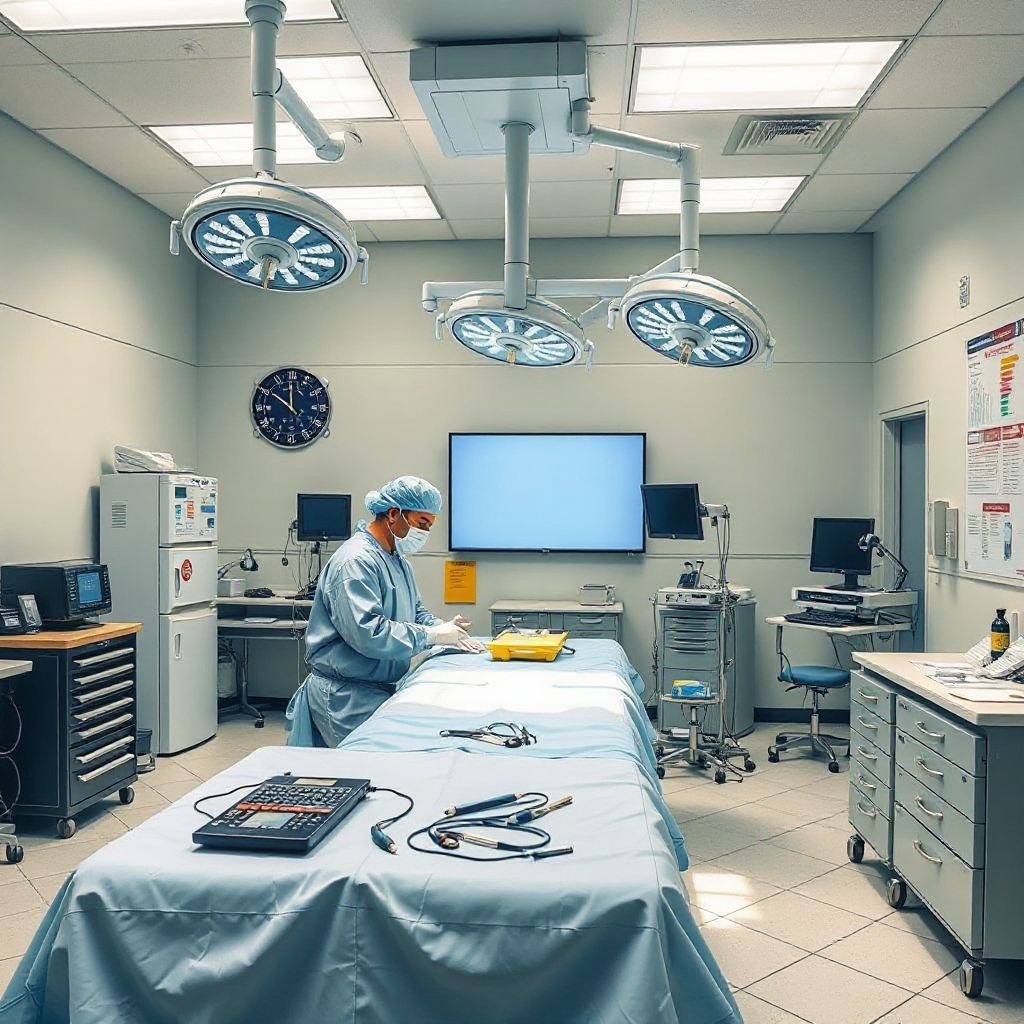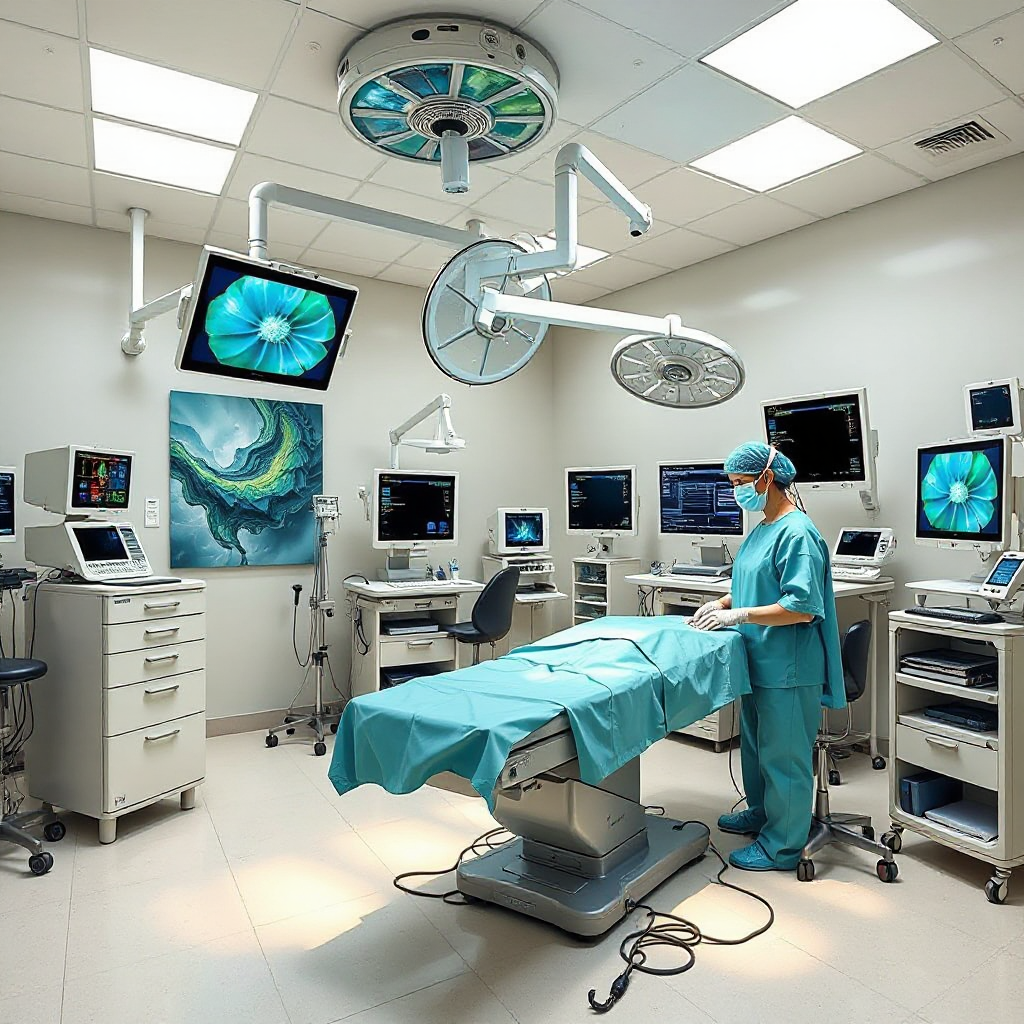The Role of Surgery in Cancer Treatment

Surgery plays a crucial role in cancer treatment. It helps remove tumors, prevent cancer from spreading, and manage symptoms to improve your quality of life. Many types of cancers are treated with surgery, including:
Breast cancer
Colorectal cancer
Pancreatic cancer
Esophageal cancer
Head and neck cancers
The type of surgery depends on the cancer’s location, stage, and your overall health. For many patients, surgery serves as a cornerstone of cancer treatment: SURGERY, offering both hope and healing.
Key Takeaways
Surgery is important in treating cancer. It removes tumors and helps people feel better.
Curative surgery tries to fully remove cancer if found early. Preventive surgery lowers cancer risk for people at high risk.
Diagnostic surgery gives key details about the cancer type and stage. This helps doctors decide on treatments.
Palliative surgery eases symptoms and makes patients more comfortable when cancer cannot be cured.
New surgical methods, like small cuts and robot-assisted surgery, help people heal faster and improve results.
Types of Cancer Surgeries

Curative Surgery
Curative surgery aims to completely remove cancer from your body. This type of surgery works best when cancer is localized to one area and has not spread. Surgeons often use it as the primary treatment, though it may also be combined with therapies like chemotherapy or radiation.
It focuses on eliminating all cancerous tissue.
It is most effective when cancer is detected early.
It can involve removing surrounding tissues or lymph nodes to ensure no cancer remains.
If your doctor recommends curative surgery, they will evaluate your overall health and the cancer’s stage to determine its suitability.
Preventive Surgery
Preventive surgery reduces your risk of developing cancer, especially if you have a high genetic predisposition. For example, women with BRCA1 or BRCA2 mutations may undergo prophylactic oophorectomy to lower their risk of ovarian cancer.
Evidence Type | Description |
|---|---|
Prophylactic Oophorectomy | Recommended for women with BRCA1 or BRCA2 mutations to significantly reduce ovarian cancer risk. |
Breast Cancer Risk Reduction | Some studies suggest it may lower breast cancer risk, though results are not universally agreed upon. |
This type of surgery is proactive and can provide peace of mind if you are at high risk. However, it is essential to weigh the benefits and risks with your medical team.
Diagnostic Surgery
Diagnostic surgery helps determine the type and stage of cancer. It often involves a biopsy, where a small tissue sample is removed and analyzed. Unlike curative surgery, which removes all cancer, diagnostic surgery focuses on gathering information.
It identifies whether a tumor is cancerous.
It determines the cancer’s stage and spread.
It guides doctors in planning the most effective treatment.
This type of surgery plays a critical role in Cancer Treatment: SURGERY by providing the information needed to create a personalized treatment plan.
Palliative Surgery
Palliative surgery focuses on improving your quality of life when cancer cannot be cured. This type of surgery does not aim to remove all cancer. Instead, it helps manage symptoms caused by the disease. For example, if a tumor blocks your digestive tract, surgery can remove or bypass the blockage to restore normal function.
You might consider palliative surgery if cancer causes pain, bleeding, or other complications. It can also reduce pressure on nearby organs, making you feel more comfortable. Doctors often combine this surgery with other treatments like radiation or chemotherapy to provide relief.
Tip: Palliative surgery is not about curing cancer. It is about helping you live more comfortably and addressing specific problems caused by the disease.
Discussing your goals and expectations with your medical team is essential. They will help you decide if this option aligns with your needs.
Reconstructive Surgery
Reconstructive surgery restores the appearance or function of your body after cancer treatment. It is common after procedures like mastectomies or surgeries that remove large tumors. This type of surgery can help you regain confidence and improve your physical abilities.
For instance, breast reconstruction after a mastectomy can recreate the shape of the breast. Similarly, reconstructive surgery for head and neck cancers can restore facial features or improve speech and swallowing. Surgeons use techniques like skin grafts, tissue flaps, or implants to achieve these results.
You may undergo reconstructive surgery immediately after cancer removal or at a later time. Your doctor will guide you based on your health and preferences.
Debulking Surgery
Debulking surgery removes as much of the tumor as possible when complete removal is not feasible. This approach is often used for cancers like ovarian cancer, where the tumor has spread to multiple areas. By reducing the tumor size, this surgery makes other treatments, such as chemotherapy or radiation, more effective.
This type of surgery can also relieve symptoms caused by large tumors. For example, it can ease pain or reduce pressure on nearby organs. While debulking surgery does not cure cancer, it plays a crucial role in managing the disease and improving your overall treatment outcomes.
Your doctor will evaluate the tumor's location and your overall health to determine if debulking surgery is right for you.
Cancer Treatment: SURGERY in Practice
Surgery for Diagnosis and Staging
Surgery plays a vital role in diagnosing and staging cancer. It helps doctors understand the type, location, and extent of the disease. Several steps are involved in this process:
Physical exams assess your overall health and detect abnormalities.
Imaging tests like X-rays, CT scans, and MRIs provide detailed pictures of your body.
Endoscopy uses a thin, lighted tube to examine internal organs.
Biopsies remove tissue samples to confirm if cancer is present.
Lab tests analyze cancer cells and blood to determine the stage.
Doctors use clinical staging before treatment to estimate how far cancer has spread. After surgery, pathological staging offers precise details about the disease. This information guides your treatment plan and helps predict outcomes.
Surgery as a Primary Treatment
Surgery often serves as the main treatment for many cancers. It works best when the disease is localized and can be completely removed. Curative surgery aims to eliminate all cancerous tissue, offering the best chance for recovery. For advanced cases, debulking surgery reduces tumor size to make other treatments more effective.
In some situations, palliative surgery addresses complications like blockages or pain, improving your quality of life. Supportive surgeries, such as placing a vascular access device, make it easier to receive therapies like chemotherapy. Each type of surgery has a specific purpose, tailored to your needs and the cancer’s characteristics.
Surgery in Combination with Other Treatments
Surgery often works alongside other treatments to improve outcomes. For example, doctors may use chemotherapy or radiation before surgery to shrink tumors, making them easier to remove. After surgery, these therapies can target any remaining cancer cells, reducing the risk of recurrence.
In some cases, surgery prepares your body for additional treatments. For instance, it can create access points for delivering medication or radiation. Combining surgery with other therapies enhances the effectiveness of your overall cancer treatment plan. Your medical team will design a strategy that aligns with your specific condition and goals.
Surgery for Symptom Management
Surgery can play a significant role in managing symptoms caused by cancer. When cancer grows or spreads, it may create physical discomfort or interfere with your body’s normal functions. Symptom management surgery focuses on improving your quality of life rather than curing the disease.
For example, if a tumor blocks your airway or digestive tract, surgery can remove the obstruction or create a bypass. This restores essential functions like breathing or eating. Similarly, if cancer causes fluid buildup in your chest or abdomen, surgery can drain the fluid to relieve pressure and discomfort.
You might also consider surgery to address pain caused by tumors pressing on nerves or organs. Removing part of the tumor can reduce this pressure and provide relief. In some cases, surgery can stop bleeding or prevent infections by removing damaged tissue.
Note: Symptom management surgery is not a cure. It helps you feel more comfortable and improves your ability to carry out daily activities.
Doctors often combine this type of surgery with other treatments like radiation or chemotherapy. Together, these approaches can target the underlying cancer while addressing specific symptoms. Your medical team will evaluate your condition and recommend the best options for your needs.
Surgery for symptom management is an essential part of Cancer Treatment: SURGERY. It focuses on helping you live as comfortably as possible, even when a cure is not achievable.
Advances in Surgical Techniques

Minimally Invasive Surgery
Minimally invasive surgery has transformed cancer treatment by reducing the physical impact of surgical procedures. This approach uses small incisions, specialized tools, and advanced imaging to perform precise operations. Compared to traditional open surgeries, minimally invasive techniques result in less pain, shorter hospital stays, and faster recovery times.
For example, Massachusetts General Hospital recently introduced a program for minimally invasive robotic surgery targeting gastric cancer. Led by Dr. Sophia McKinley, this program offers robotic gastrectomy as a modern alternative to conventional methods. Robotic instruments enhance precision and visualization, allowing surgeons to perform complex procedures with greater accuracy. These advancements improve outcomes and reduce recovery times, making minimally invasive surgery a preferred option for many patients.
Robotic-Assisted Surgery
Robotic-assisted surgery represents a significant leap forward in cancer treatment. This technique uses robotic systems equipped with multi-lens cameras that provide three-dimensional magnification. Surgeons control robotic arms to perform intricate procedures with unmatched dexterity and precision.
This technology has shown remarkable results in cancer surgeries. For instance, robotic colectomies have demonstrated better outcomes compared to laparoscopic methods. Patients experience shorter hospital stays, fewer complications, and more accurate cancer staging due to improved lymph node dissection. These benefits make robotic-assisted surgery an essential tool in modern cancer care, offering you a safer and more effective treatment option.
Image-Guided Surgery
Image-guided surgery uses advanced imaging technologies like CT scans, MRIs, and ultrasounds to guide surgeons during operations. These tools provide real-time visuals, helping surgeons locate and remove tumors with high accuracy. This technique is especially useful for cancers in hard-to-reach areas or near vital organs.
By improving precision, image-guided surgery minimizes damage to healthy tissues and reduces the risk of complications. It also enhances the surgeon’s ability to remove all cancerous cells, increasing the chances of a successful outcome. For you, this means a more targeted approach to treatment with fewer side effects and a quicker recovery.
Note: Advances in surgical techniques like these continue to improve the effectiveness of Cancer Treatment: SURGERY, offering you better outcomes and a higher quality of life.
Cryosurgery
Cryosurgery uses extreme cold to destroy cancer cells. Doctors apply liquid nitrogen or argon gas to freeze and kill abnormal tissues. This technique works well for certain cancers, including skin, cervical, and prostate cancers.
You might benefit from cryosurgery if your cancer is localized and accessible. For example, doctors often use it to treat precancerous lesions on the skin or cervix. It can also target tumors in organs like the liver or kidneys.
Here’s how cryosurgery works:
Application of Cold: A probe delivers liquid nitrogen or argon gas directly to the cancerous tissue.
Freezing Process: The extreme cold forms ice crystals inside the cells, damaging their structure.
Cell Death: The frozen cells die and are naturally removed by your body over time.
Cryosurgery offers several advantages. It is minimally invasive, meaning you experience less pain and a shorter recovery time. It also preserves healthy tissue around the treated area. However, it may not be suitable for large or deep tumors.
Tip: Cryosurgery is often performed as an outpatient procedure. You can usually return home the same day.
Doctors may combine cryosurgery with other treatments like radiation or chemotherapy to improve results. If you’re considering this option, your medical team will evaluate your condition and discuss its potential benefits and risks.
Laser Surgery
Laser surgery uses focused light beams to treat cancer. The high-energy light precisely targets and destroys cancerous cells. This method is effective for cancers in delicate areas, such as the throat, cervix, or bladder.
You might find laser surgery appealing because it offers precision and minimal damage to surrounding tissues. For instance, doctors use it to remove tumors or shrink them before other treatments. It can also seal blood vessels, reducing bleeding during surgery.
Here are some common uses of laser surgery:
Tumor Removal: Lasers can cut through tissue to remove small tumors.
Symptom Relief: They can shrink tumors that block airways or digestive tracts.
Skin Cancer Treatment: Lasers treat early-stage skin cancers effectively.
Laser surgery provides several benefits. It causes less pain and scarring compared to traditional surgery. Recovery times are shorter, allowing you to resume daily activities sooner. However, it requires specialized equipment and expertise, which may limit its availability.
Note: Laser surgery works best for small, localized cancers. It may not be effective for advanced or widespread disease.
Your doctor will determine if laser surgery suits your condition. They will consider factors like tumor size, location, and your overall health. This advanced technique continues to improve cancer treatment outcomes, offering you a less invasive option.
Factors Influencing Surgical Suitability
Type and Stage of Cancer
The type and stage of cancer play a major role in determining if surgery is the right option for you. Early-stage cancers often respond well to surgery, especially when the disease is localized. However, advanced cancers that have spread to other parts of the body may require different treatment strategies.
Surgery may not be suitable if cancer has metastasized, as removing the primary tumor might not address the spread.
If the tumor is near vital organs, surgery could pose significant risks.
Your overall health and the presence of other medical conditions also influence the decision.
Doctors carefully evaluate these factors to decide if surgery aligns with your treatment goals. They aim to maximize benefits while minimizing risks.
Tumor Location and Accessibility
The location of the tumor significantly affects the feasibility of surgery. Tumors in easily accessible areas, such as the skin or breast, are often easier to remove. However, tumors located near critical structures, like the brain or heart, require advanced techniques and careful planning.
Surgeons use imaging technologies, such as CT scans or MRIs, to assess the tumor’s position. These tools help them determine the safest approach to remove the cancer while protecting nearby organs. In some cases, minimally invasive or robotic-assisted surgeries offer better precision, reducing the risk of complications.
Tip: Discuss the tumor’s location with your doctor to understand how it impacts your surgical options.
Patient’s Overall Health and Medical History
Your overall health and medical history are crucial when considering surgery. Doctors evaluate your ability to tolerate the procedure and recover effectively. Conditions like heart disease, diabetes, or respiratory issues may increase surgical risks.
Common risks associated with cancer surgery include:
Blood loss or clots
Infections at the surgical site
Delayed healing
Damage to nearby organs
Pain or discomfort after the procedure
Anesthesia also carries risks, especially for individuals with pre-existing conditions. Your medical team will weigh these factors against the potential benefits of surgery. They may recommend alternative treatments if the risks outweigh the advantages.
By understanding your health status, doctors can create a personalized plan that prioritizes your safety and well-being. Surgery remains a cornerstone of Cancer Treatment: SURGERY, but it must be tailored to your unique circumstances.
Potential Risks and Benefits of Surgery
Surgery offers many benefits in cancer treatment, but it also comes with potential risks. Understanding both can help you make informed decisions about your care.
Benefits of Surgery
Surgery can provide significant advantages in managing cancer:
Complete Tumor Removal: For early-stage cancers, surgery often removes all cancerous tissue, increasing your chances of recovery.
Symptom Relief: It can alleviate pain, blockages, or other complications caused by tumors.
Improved Quality of Life: Reconstructive surgeries restore appearance and function, helping you regain confidence and physical abilities.
Enhanced Treatment Outcomes: In combination with other therapies, surgery can improve the effectiveness of your overall treatment plan.
Tip: Discuss your goals with your doctor to understand how surgery fits into your treatment strategy.
Risks of Surgery
Like any medical procedure, surgery carries risks. These may vary depending on your health, the type of surgery, and the cancer’s characteristics:
Infections: Surgical wounds can become infected, requiring additional care.
Bleeding or Blood Clots: These complications may occur during or after surgery.
Organ Damage: Nearby organs or tissues could be affected, especially in complex procedures.
Pain and Recovery Challenges: You might experience discomfort or a longer recovery period, depending on the surgery’s extent.
Anesthesia Risks: Some individuals face complications from anesthesia, particularly those with pre-existing conditions.
Note: Your medical team will take steps to minimize these risks and ensure your safety.
Weighing the risks and benefits of surgery is crucial. Your doctor will guide you through this process, helping you choose the best option for your unique situation. Surgery remains a powerful tool in cancer treatment, offering hope and improved outcomes for many patients.
Surgery remains a cornerstone of cancer treatment, offering solutions for diagnosis, treatment, and symptom relief. Advances in surgical techniques have significantly improved recovery times. Many patients now recover in days rather than weeks, with some resuming work or chemotherapy within two weeks. Nearly 40% of patients manage pain with alternatives like ibuprofen instead of narcotics. These innovations enhance your experience and outcomes. Consulting with your medical team ensures you receive a personalized plan tailored to your needs. Cancer Treatment: SURGERY continues to evolve, providing hope and better results for patients like you.
FAQ
What is the recovery time after cancer surgery?
Recovery time depends on the type of surgery and your overall health. Minimally invasive procedures often allow you to recover within days, while major surgeries may take weeks. Your doctor will provide specific guidance based on your condition.
Can surgery completely cure cancer?
Surgery can cure cancer if it is localized and detected early. Removing all cancerous tissue offers the best chance for recovery. However, advanced cancers may require additional treatments like chemotherapy or radiation to manage the disease.
Is cancer surgery painful?
You may experience some pain or discomfort after surgery, but doctors manage it with medications. Minimally invasive techniques often result in less pain and faster recovery. Discuss pain management options with your medical team before the procedure.
Tip: Ask your doctor about non-narcotic pain relief options for a smoother recovery.
Are there risks involved in cancer surgery?
Yes, surgery carries risks like infection, bleeding, or damage to nearby organs. Your medical team takes precautions to minimize these risks. They will evaluate your health and discuss potential complications before recommending surgery.
How do I prepare for cancer surgery?
Preparation involves medical tests, lifestyle adjustments, and following your doctor’s instructions. You may need to stop certain medications or fast before the procedure. Staying informed and asking questions helps you feel more confident and prepared.
Note: Follow your doctor’s pre-surgery guidelines closely to ensure the best outcomes.
See Also
Choriocarcinoma: Definition, Symptoms, And Treatment Options
Recognizing Duodenal Cancer: Symptoms And Available Treatments
Cholangiocarcinoma: Key Features And Important Insights
